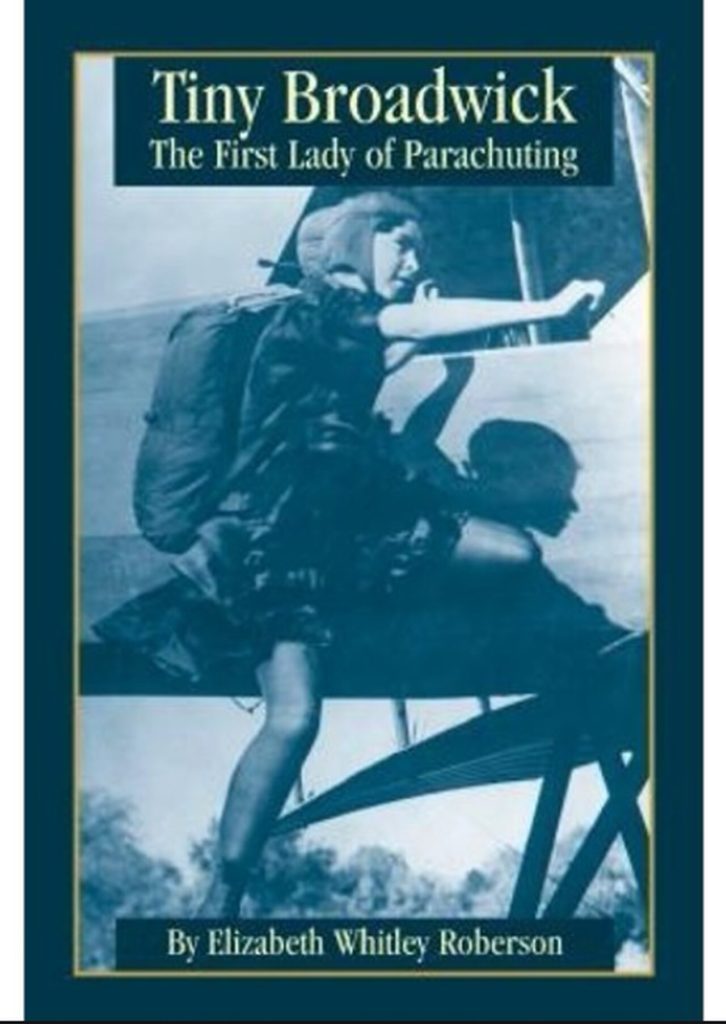Women’s History Month: The Incredible Story of Georgia “Tiny” Broadwick
In honor of Women’s History month, we wanted to spotlight the amazing story of Georgia “Tiny” Broadwick, the first woman to parachute from an airplane and the first person to manually deploy a parachute after a malfunction! Continue reading to learn more about this incredible woman.
Her Life
Georgia Ann Thompson was born in Granville County, North Carolina on April 8th, 1893. She weighed just three pounds, thus giving her the nickname “Tiny”. The name stuck for the rest of her life because even when fully grown, she was just 5 feet tall and weighed only 80 pounds. Georgia married at 12, and had a daughter, Verla, at 13. After her husband was killed in an accident, she had to work 14-hour days in a cotton mill to support her little family.
In 1907 at the North Carolina State Fair, Georgia saw the performance, “The Broadwicks and their Famous French Aeronauts”. The performers ascended to the sky in hot-air balloons, then thrilled spectators by jumping out of them with parachutes. Inspired by this, Georgia asked show owner Charles Broadwick if she could travel with the group and become a part of the act. He agreed to hire her, and Georgia’s mother let her go with a few stipulations- she had to leave Verla behind and send back a money to help support her. Broadwick trained her in the art of parachute jumping, and in 1908, legally adopted her. When this happened, Georgia’s name officially became Tiny Broadwick.
While performing, Tiny was known as “The Doll Girl”. She dressed in ruffled bloomers with pink bows on her arms, ribbons in her long curly hair, and a bonnet on her head. Tiny was just 15 years old when she jumped from a hot-air balloon at the 1908 North Carolina State Fair. Describing her feelings later, she said, “I tell you, honey, it was the most wonderful sensation in the world!” It was a thrill she would come to experience some 1,000 times in her life.
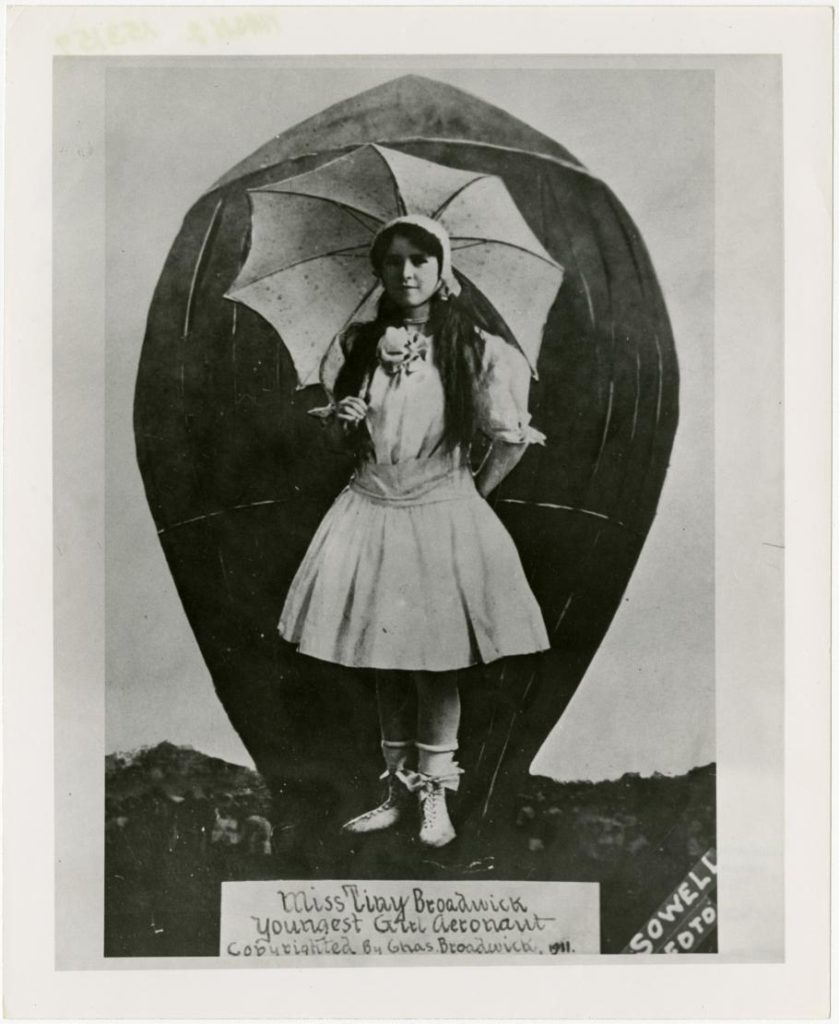
Smithsonian National Air and Space Museum (NASM 98-16301)
The Transition from Balloons to Airplanes
Tiny and Charles Broadwick traveled all over the country with their balloon act, but by 1912, their performance was losing popularity. Fortunately, a new opportunity presented itself to Tiny when she met famed pilot Glenn Martin. He had seen her jump from a balloon, and asked if she would like to parachute from his airplane instead. Tiny immediately agreed to work for Martin, whose aircraft company is still in business today and is operating under the name Martin Marietta.
In preparation for the jump, Charles Broadwick developed a parachute for Tiny made of silk. It was packed into a knapsack attached to a canvas jacket with harness straps. A string was fastened to the plane’s fuselage and woven through the parachute’s canvas covering. When Tiny jumped from the plane, the cover tore away and her parachute filled with air.
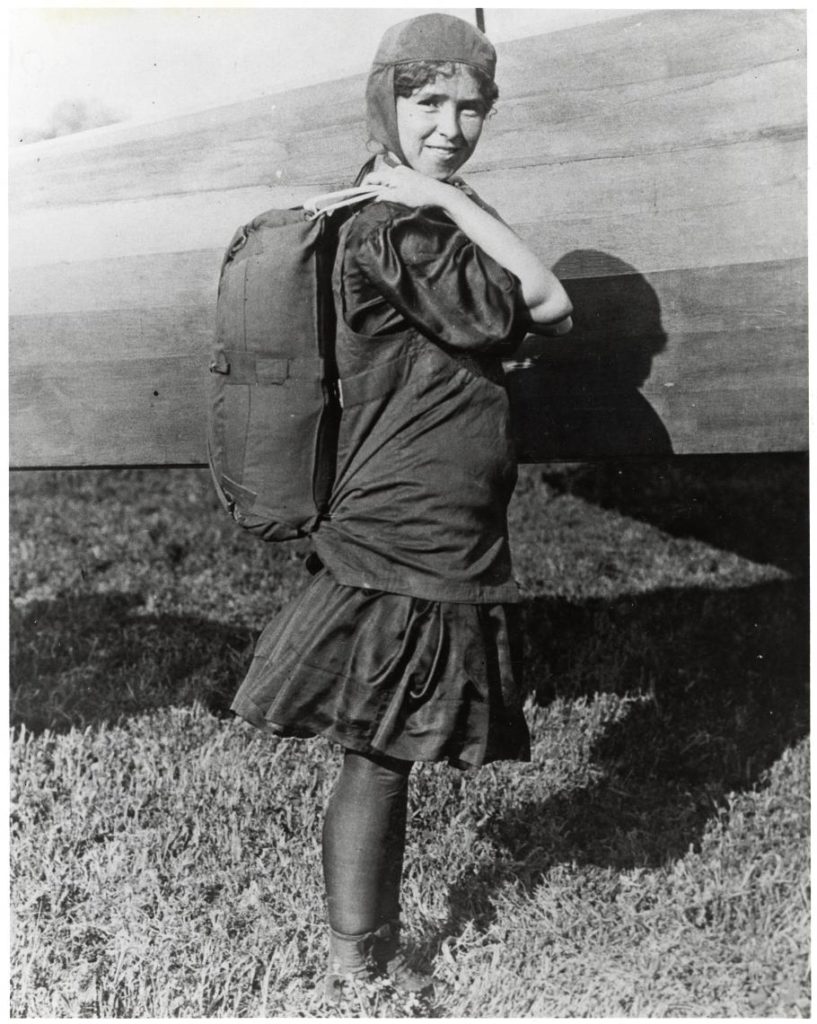
On her first jump, Tiny was suspended from a trap seat behind the wing and outside the cockpit, with the parachute on a shelf above her. Martin took the plane up to two thousand feet, and then Tiny released a lever alongside the seat, allowing it to drop out from under her. The jump was a success and she landed in Griffith Park in Los Angeles, making her the first woman to parachute from an airplane. After that first jump from Martin’s plane, Tiny was in great demand all over the country. She also became the first woman to parachute into a body of water.
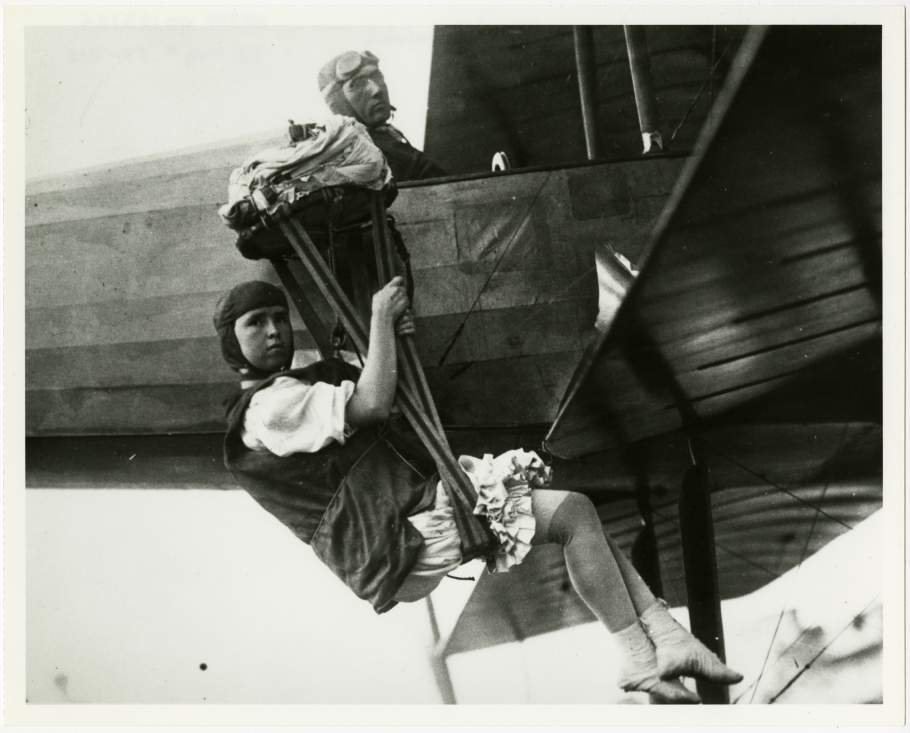
Smithsonian National Air and Space Museum
WWI Contributions to the U.S. Army
In 1914, at the start of WWI, representatives of the Army Air Corps visited Tiny in San Diego and asked her to demonstrate a jump from a military plane. At that time, many Air Corps pilots had already perished, and the Army wanted Tiny to showcase how to safely parachute out of a plane.
During the demonstration, Tiny made four jumps at San Diego’s North Island. The first three went smoothly, but on the fourth jump, her parachute’s line became tangled in the tail assembly of the plane. Due to high winds, she could not get back into the plane. Instead of panicking, Tiny cut all but a short length of the line, which made her plummet towards the ground. Still keeping a cool head, she pulled the line by hand, freeing the parachute to open by itself. This demonstrated what would be known as the rip cord, and showcased that someone who had to leave an airplane in flight did not need a line attached to the aircraft to open a parachute. A pilot could safely bail out of a damaged craft. Following this, the parachute became known as the life preserver of the air.
These images show a parachute Tiny donated to the Army Museum Enterprise collection. This was an experimental static line parachute developed during the 1930’s and tested by the U.S. Army.
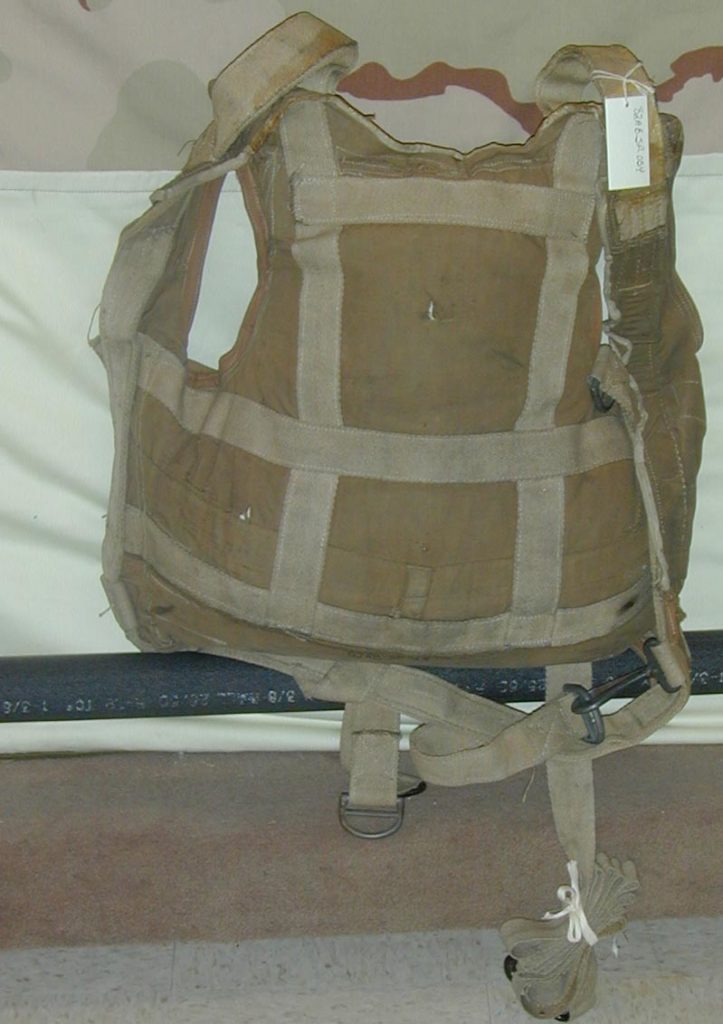
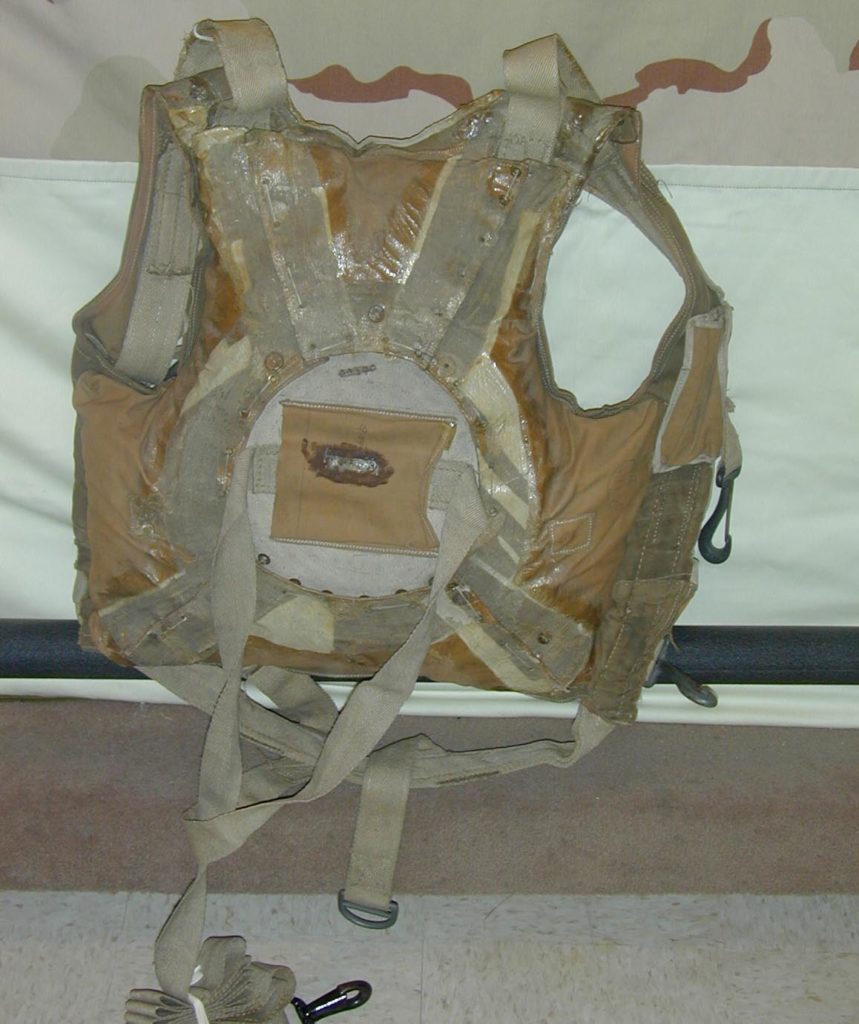
Retirement and Passing
Tiny Broadwick’s last jump was in 1922, when she was just 29 years old. Chronic problems with her ankles forced her into retirement. She stated at the time, “I breathe so much better up there, and it’s so peaceful being that near to God.”
Tiny received many honors and awards in her lifetime, including the U.S. Government Pioneer Aviation award and the John Glenn Medal. She is one of the few women in the Early Birds of Aviation, and she also received the Gold Wings of the Adventurer’s Club in Los Angeles. In 1964, Tiny was made an honorary member of the 82nd Airborne Division at Ft. Bragg. With that honor, she was told she could jump any time she chose. At the age of 85, Tiny Broadwick died and was buried in her home state of North Carolina.
Interested in learning more about Tiny Broadwick’s incredible life? We recommend reading the book below! Click the button to purchase it from our ASOMF Gift Shop.
